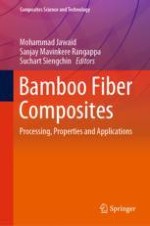2021 | OriginalPaper | Buchkapitel
Characterization and Properties of Biopolymer Reinforced Bamboo Composites
verfasst von : Laila El Foujji, Khadija El Bourakadi, Abou el kacem Qaiss, Rachid Bouhfid
Erschienen in: Bamboo Fiber Composites
Verlag: Springer Singapore
Aktivieren Sie unsere intelligente Suche, um passende Fachinhalte oder Patente zu finden.
Wählen Sie Textabschnitte aus um mit Künstlicher Intelligenz passenden Patente zu finden. powered by
Markieren Sie Textabschnitte, um KI-gestützt weitere passende Inhalte zu finden. powered by
